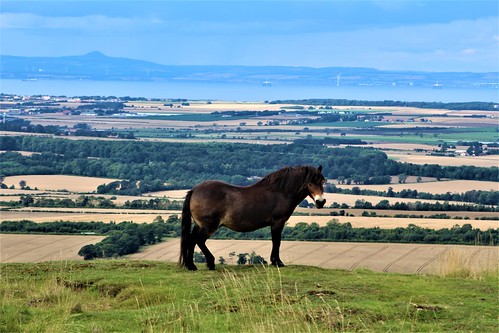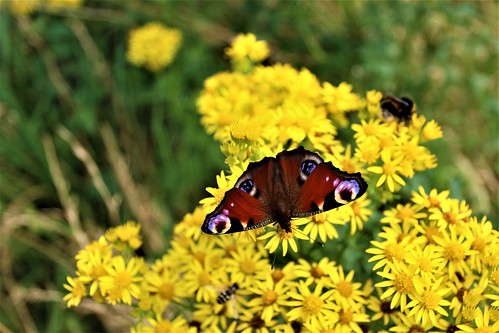Traprain Law: Natural History and Flora and Fauna in S.E. Scotland
(Above image is a capture of Exmoor ponies with Firth of Forth in distance.)
This afternoon, I am providing more information on yesterday's trip to Traprain Law in S.E. Scotland.
Yesterday, my focus was on the extensive archaeology and link with the Roman period. Today, I am reporting on flora and fauna, geology and landscapes.
Location: About twenty miles south of Edinburgh.
Etymology: Traprain appears to have Brittonic/Cumbric (Welsh) origins meaning either 'farm', 'tree' or 'hill'. 'Law' can be traced to the Old English name 'hlaw' meaning a hill.
Geology
Traprain Law is a whaleback lump rising to 725 feet which appears incongruous in context of the generally flat farming landscape on which it sits.This is because it originated as an infusion of lava (laccolith) during the carboniferous period 290-360m years ago when what is now Scotland straddled the equator. There are similar, contemporary, protuberances nearby including Bass Rock (also a laccolith) and North Berwick Law (a volcanic plug). Further to the east is another volcanic system from the same period consisting of Edinburgh Castle, Calton Hill and Arthur's Seat.
North Berwick Law, A volcanic plug.
Bass Rock, a bird reserve.White colour is a function of accumulated seagull guano.
Traprain Law on landscape
Flora and Fauna
Here is one of a herd of hardy, Exmoor ponies which have been introduced to manage the vegetation and reduce the risk of fire during periods of dry weather.In the distance can be seen the Firth of Forth and Fife Coast.
Peacock Butterfly
Harebells. (Perennial wildflowers.)
Other Images
View of summit with archaeology in foreground
Ascending the hill.
Local farming landscape.
Video clip of landscape and Firth of Forth from Trapain Law.











Comments
Post a Comment